Part 1: Pioneer species on a fire-affected landscape
Driving into the park a month after the 2024 Jasper Wildfire, we braced ourselves for a charred-earth landscape.
Emotions of loss, devastation, and trepidation followed us in. So when we passed vibrant patches of green grasses springing from newly blackened soil, I let out a breath. I knew that our natural ecosystem was changed, not lost.
We were already witnessing renewal, and my mind turned to what stories this land will reveal to us.
Proof of Life
My first walk in the park, taken just two months after the fire, led me to Old Fort Point. Every tree was burned, with no trace of needles or deciduous leaves; just blackened skeletons. But then we turned a corner and there, under the white bones of aspen tree trunks, grew trembling aspen saplings already 15-20 cm high.
This vibrant sprouting of life is caused by a hormone imbalance. When fire killed the above ground portion of aspen it turned off the tree’s hormone (auxin) that promotes root growth. At the same time, it stimulated other hormones (cytokinin) that start root suckering, in effect sending out mini-me aspens.
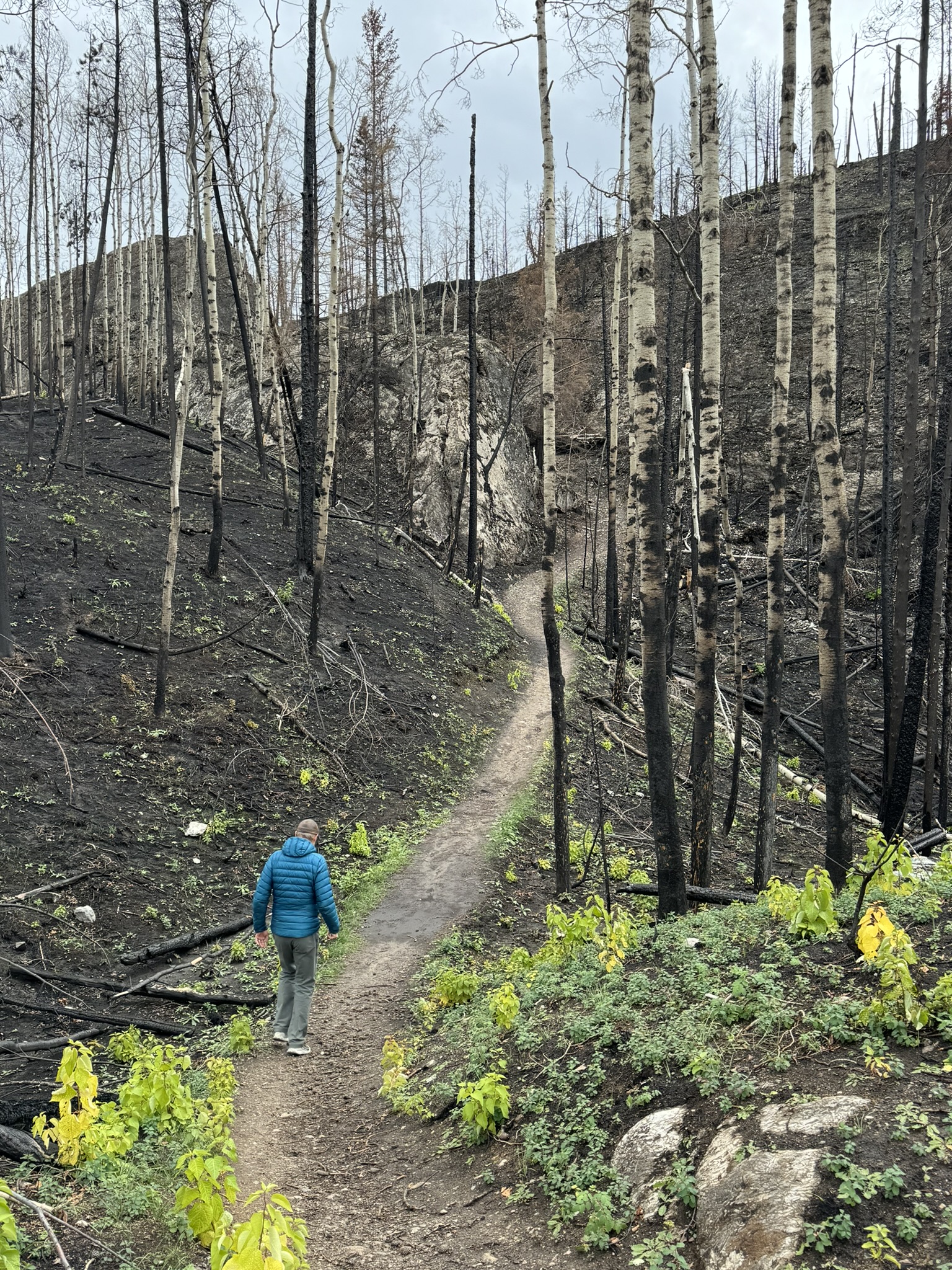
Small and mighty mosses and liverworts (Bryophtes) also appear within months of the fire. Think of them as nature’s first-aid, ready to move in and start the healing process. While most plants have roots, bryophytes absorb water and nutrients through their leaves, enabling them to live on, even in the most severely burned areas where only mineral soil remains.
Studies have shown that these mosses help build soil fertility by adding organic carbon, nitrogen, and phosphorus. They also become miniature forests—full of insects, algae, bacteria, and fungi. This thin green layer of life starts healing by improving soil quality, preventing erosion, and helping with soil water absorption, all things that pave the way for more plant life.
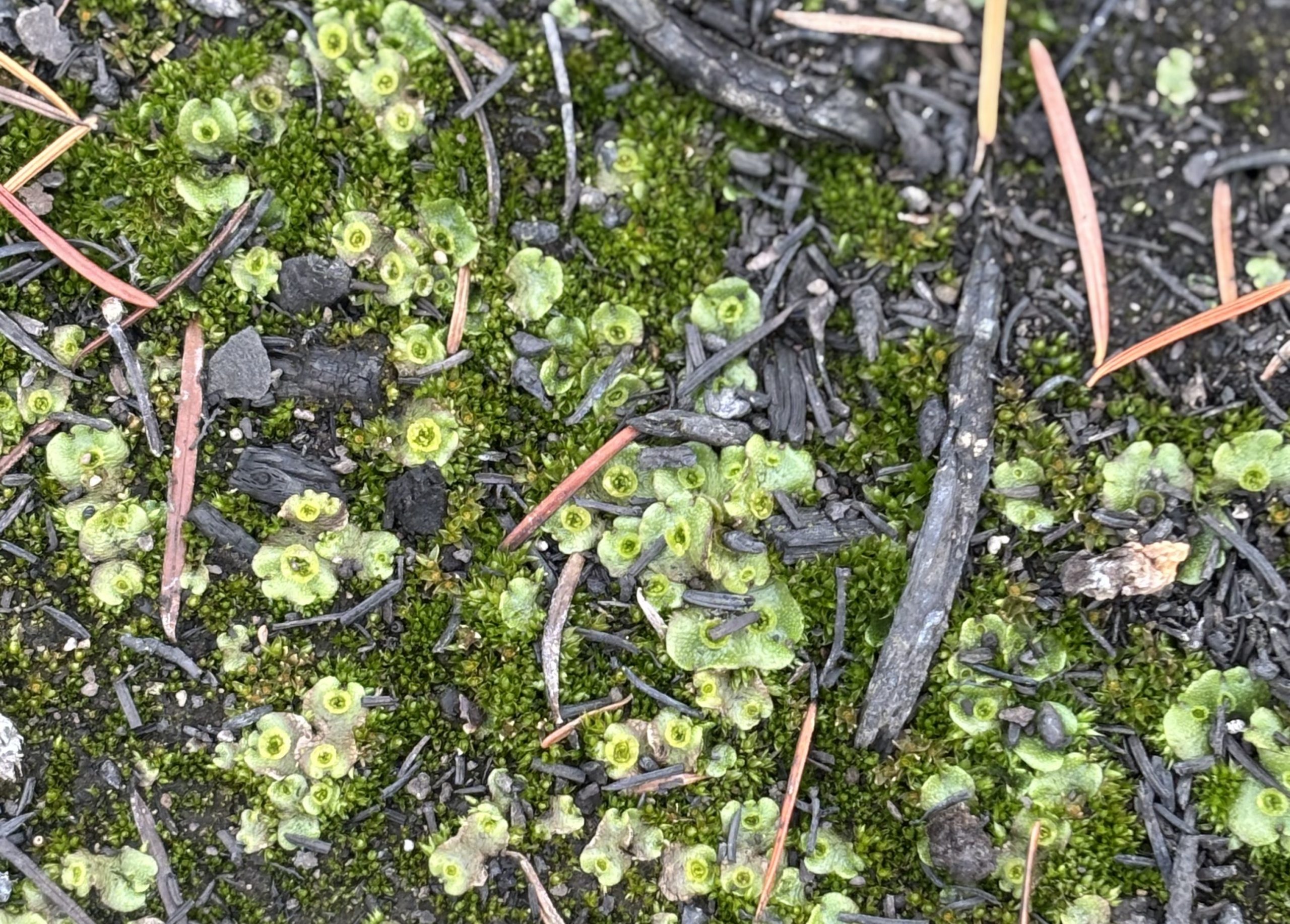
Sprout it out
The 2024 Jasper Fire that swept through the Athabasca Valley created a varied canvas for vegetation renewal. When we walk through burned areas this spring and summer the plant life will help us understand how much of the vegetation and organic soil was destroyed (fire severity). We might not see any growth, or we might see an explosion of wildflowers and grasses.
Look closely at burned bushes. New growth might be showing. If the fire was not too severe, plants like potentilla and wild roses should be the first to start sprouting greenery from their bases.
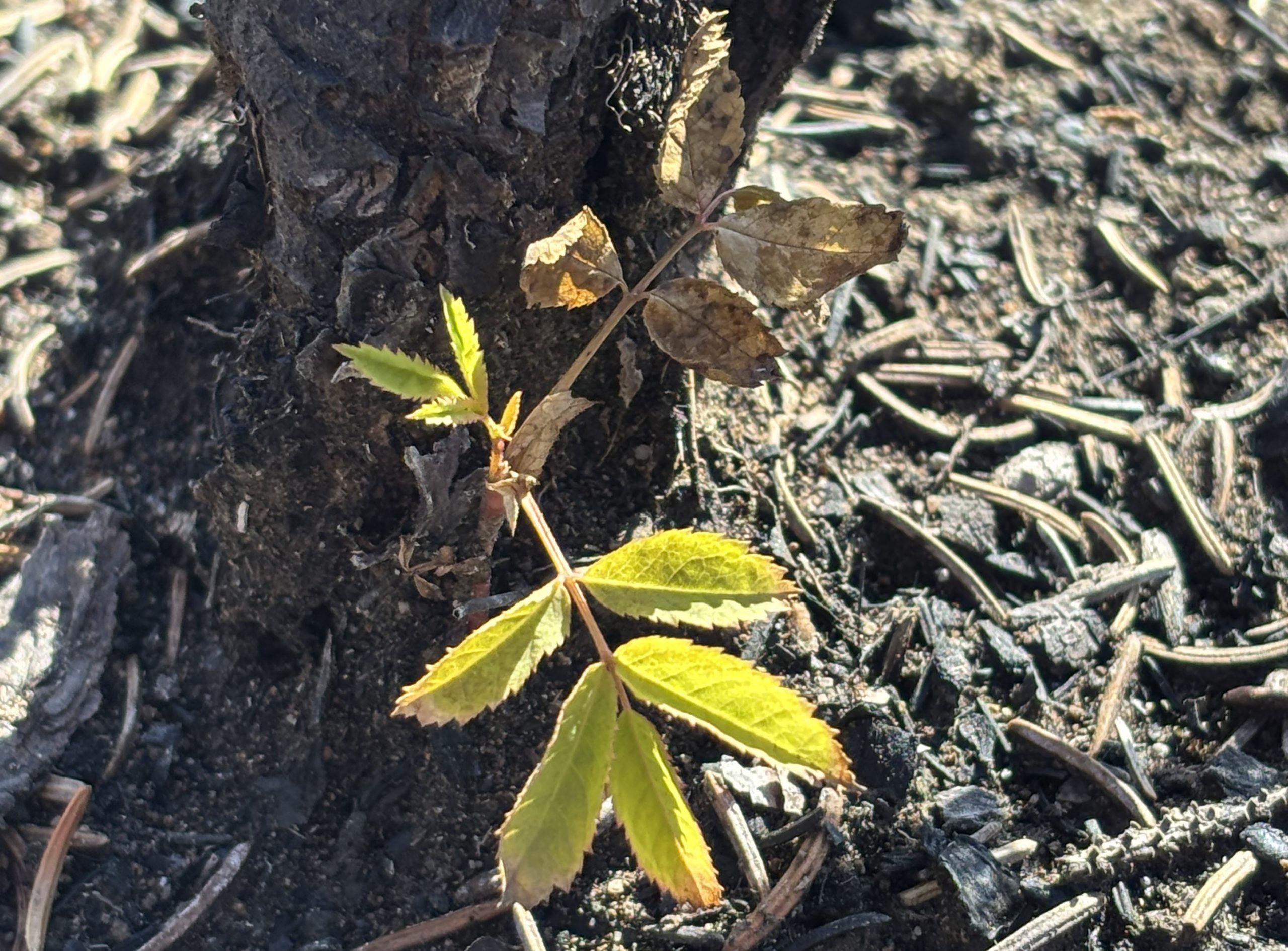
Many plants thrive when fire changes the chemistry of the soil, eliminates competition from other plant life and increases sunlight to the forest floor. In open areas, expect to start seeing bearberry, strawberries, showy asters and fire weed.
A great underground story that will emerge are mushrooms and other fungi sending up their fruiting bodies. Some fungi wait decades, and even centuries, for fire conditions to occur before they surface. Fire-loving fungi (Pyrophilus fungi) could start appearing in the first year after the fire. Most famous are the Morel mushroom, of which there are many varieties.
Some shrub plants, so important to wildlife like moose and bears, will have a much-needed chance to reestablish after this fire. Buffaloberry, a critical food source for both black and grizzly bears, could be back with renewed vigour on the landscape, and could be producing good berry crops within four years. Willow—critical moose and beaver food—are some of the first pioneer species to break out on a fire-affected landscape.
The years to follow
Fire plays a critical role for vegetation in the Rocky Mountains. Some plants in these mountains are even fire-dependent.
The lodgepole pine, which had been so hard-hit by mountain pine beetle, held onto their cones. About 50 percent of cones on a lodgepole are sealed by a hard resin that can preserve seeds for decades, protecting them as they wait for fire. Fire melts the resin, allowing the seeds to be released on the burnt forest floor. Increased light and moisture, due to a lack of a forest canopy, create the perfect conditions for seed germination. But becoming a tree is not a quick process. After the 2015 Excelsior Fire (near Medicine Lake) it took about seven years before we saw the first lodgepole seedlings.
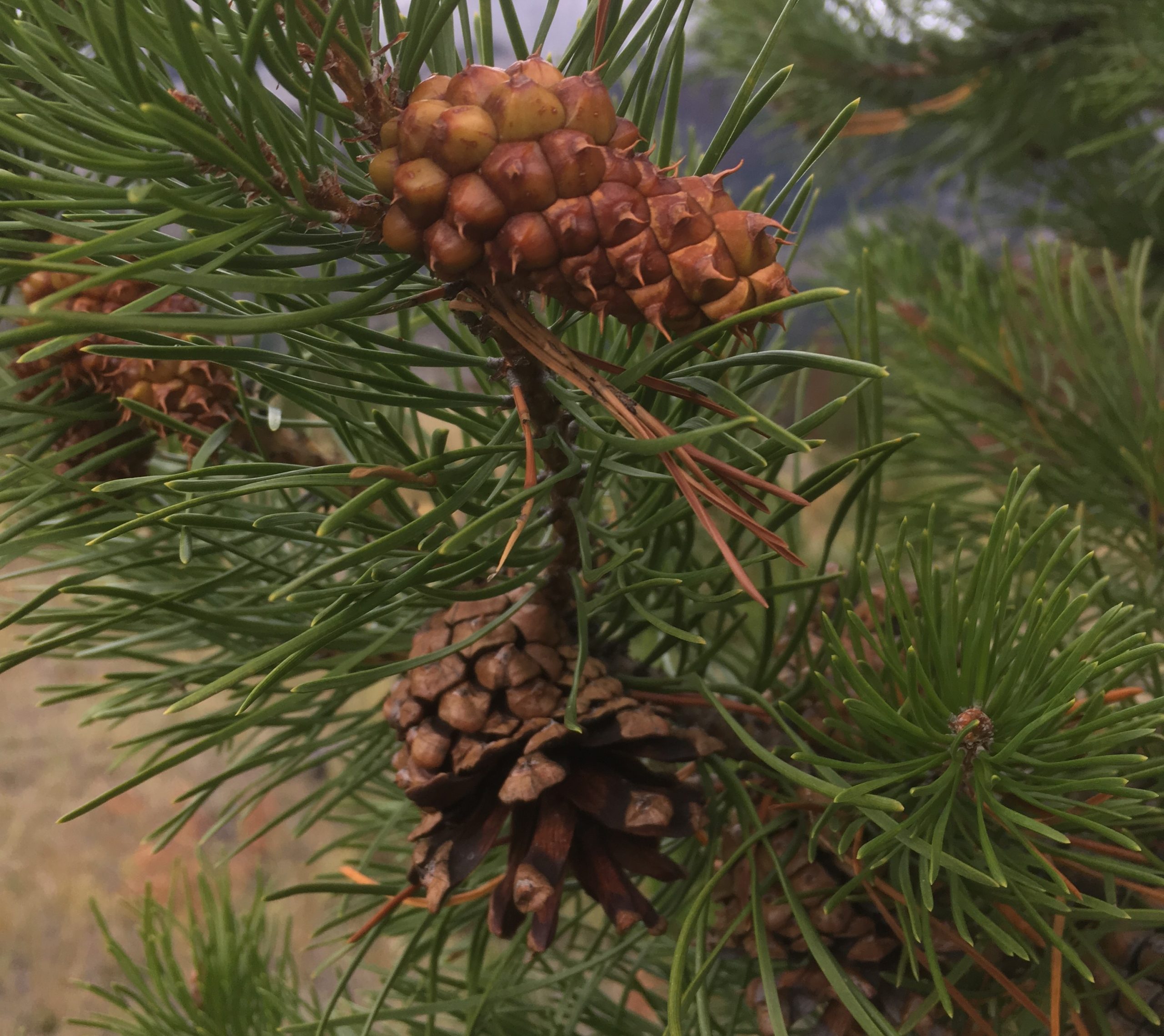
Even if plants are not fire-dependent or adapted, nature has a way of helping their survival in the most surprising ways. Walking through a spruce forest, where all of the cones on the trees had been destroyed, I saw a collection of spruce and Douglas fir cones on the ground. Red squirrels had stored these cones underground in middens, and brought them to the surface after the fire. Inadvertently, the cheeky squirrels became seed saviours, giving spruce and fir a chance to re-establish.
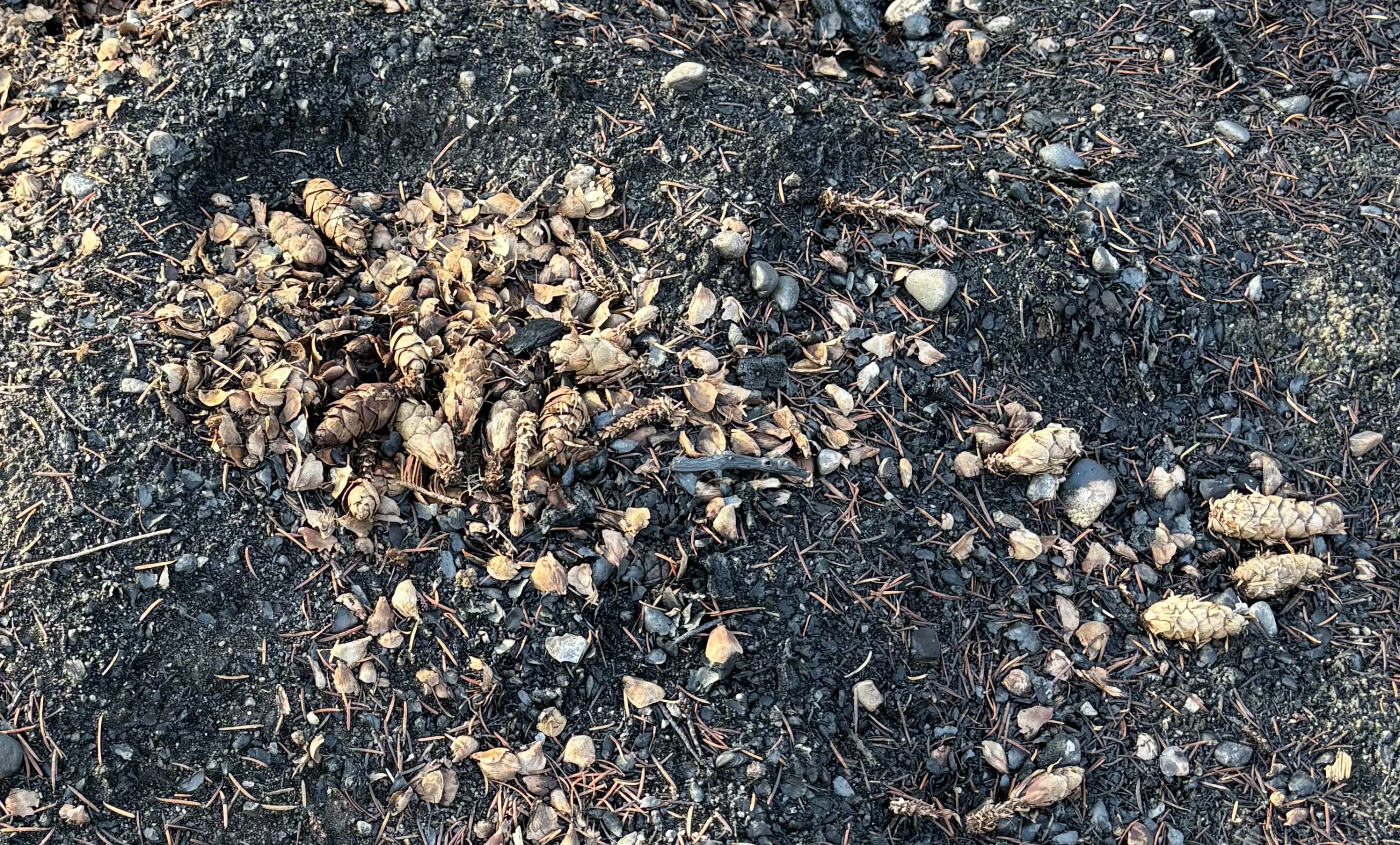
My daily walks in Jasper’s newly burnt forests gives my naturalist curiosity a new focus. Upon our return from evacuation, I took a shot of the forest while hiking and recorded the photograph’s GPS location. My nerdy plan is to conduct my own citizen science, by taking a new photo from the same spot, at the same time, each year. I hope to make a record of the renewal, marvel at nature’s resilience, and learn what this life-altering fire has to teach us.
In the meantime, there are some tips for those of us who are walking through fire affected forests: Be careful during windy conditions, as weakened trees can crash down. Stay on trails; the soil and earth are fragile. And between trails, clean your boots; new soil is susceptible to spread of invasive species
Kirsten Schmitten // info@thejasperlocal.com
About the author:
Kirsten Schmitten is a certified Master Interpretive Guide and a writer who loves All Things Wild.
Want to learn more? Book one of All Things Wild’s guided hikes, talks or step-on guides to find out about Jasper’s natural and historical stories. Call 780-931-6044 or visit allthingswild.ca


